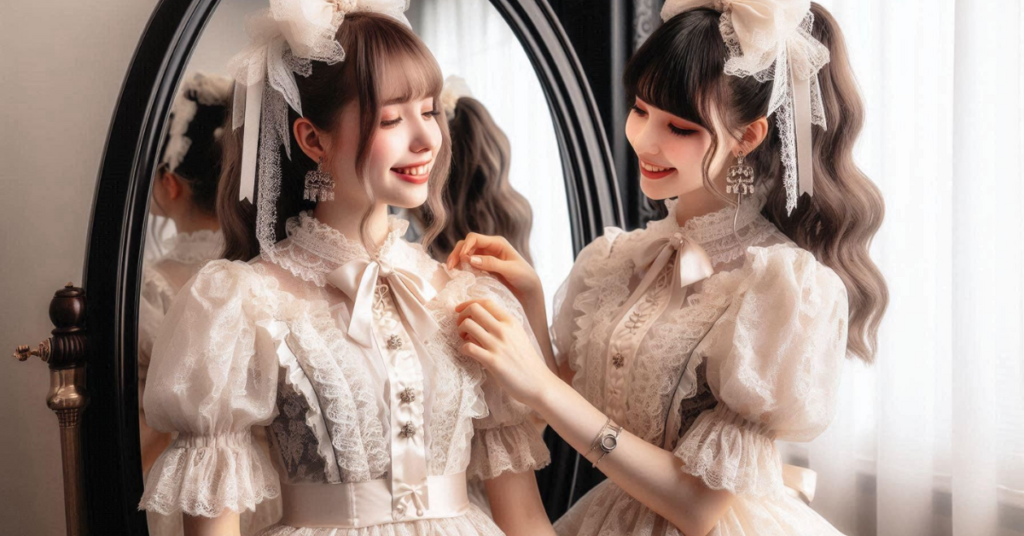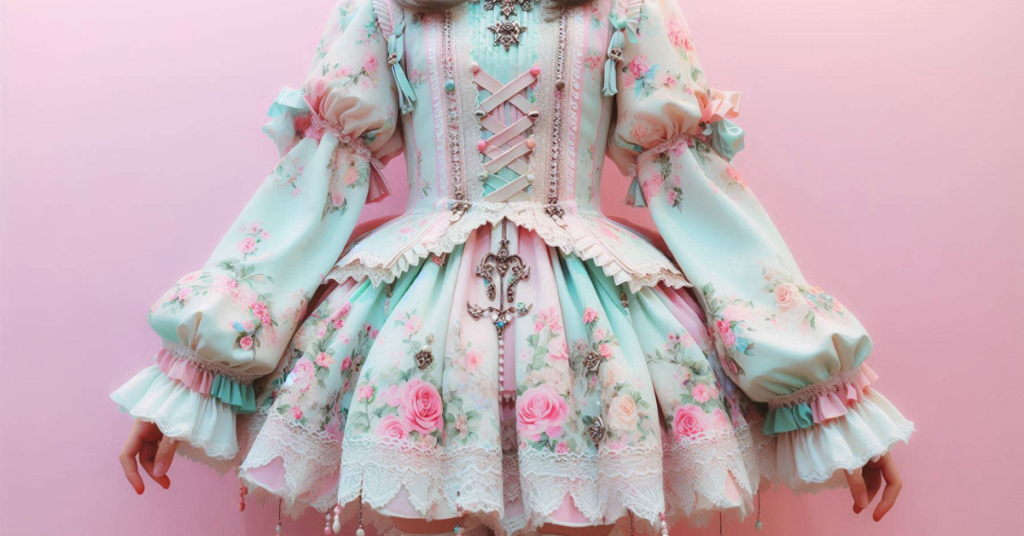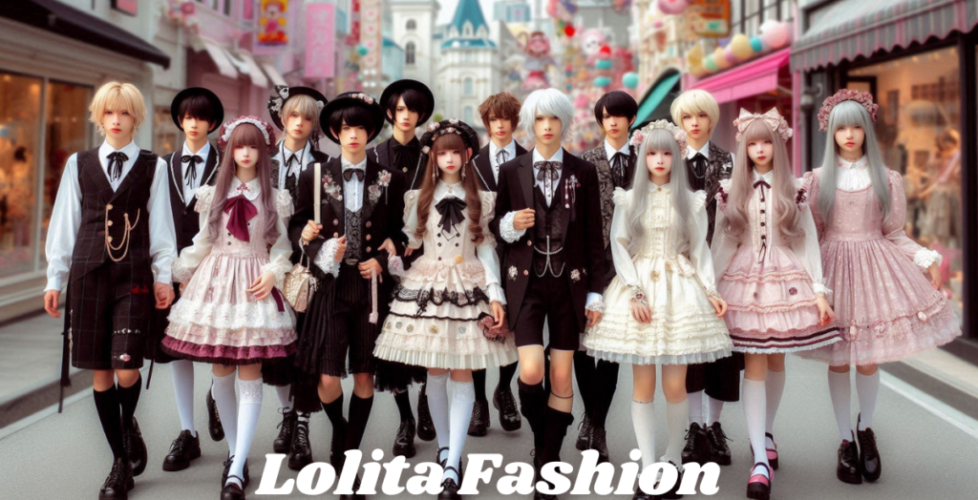Lolita Fashion: Beyond the Frills
Lolita fashion is captivating and often misunderstood. It has grown from its Japanese roots to enchant fans worldwide. Lolita fashion is more than intricate dresses and charming looks. It represents a complex subculture with a lot of history and careful craftsmanship. It also has a strong feeling of society. Expanded exploration delves deeper into Lolita fashion. The examines its evolution, social dynamics, garment construction, and global interpretations. It also covers responses to criticisms. It reveals a vibrant world of creativity and self-expression.
A Journey Through Time: Origins and Evolution
Many people link Lolita’s fashion to Victorian and Rococo aesthetics. Its origins are unique. In the late 20th century, Japan’s social and cultural landscape tied them together. Lolita emerged from the vibrant street-style scene of Harajuku in the 1980s. It became a form of rebellion. The expectations were for conformity and traditional femininity. Inspired by a longing for a bygone era, early Lolitas made their outfits. They drew inspiration from vintage clothing, doll fashion, and Western history.
In the late 1980s and early 1990s, iconic Lolita brands rose. They included Baby, The Stars Shine Bright, and Metamorphose Temps de Fille. These brands dedicated themselves to intricate designs, high-quality materials, and romantic aesthetics. They played a crucial role in defining Lolita fashion. Moreover, their influence propelled the style into the mainstream. Magazines like Gothic & Lolita Bible further popularized Lolita fashion. They showcased the latest trends and gave a platform for fans to connect and share their passion.
Over time, Lolita fashion split into distinct substyles. Each had its traits and influences. Gothic Lolita has darker colors, intricate lace, and religious or macabre motifs. It became a prominent substyle, embodying a somber and elegant aesthetic. As the name suggests, Classic Lolita embodies timeless elegance and sophistication. It often favors muted tones, floral patterns, and more straightforward, mature designs. Sweet Lolita embraces a playful and youthful aesthetic. It features pastels and cute motifs like fruits, animals, and sweets. It emphasizes a charming and innocent appearance.
Also Read: Men’s Apparel 2024: Where Ethics Meet Aesthetics
Beyond the Clothes: The Social Fabric of Lolita Fashion
The allure of Lolita fashion extends far beyond the clothes themselves. It fosters a strong sense of community, both online and offline. Lolitas connect over their shared passion, trade styling tips, and support each other.

Meetups and events bring people together to socialize and showcase style. They offer chances to forge lasting friendships through shared experiences. From tea parties to grand balls, these gatherings create connections.
The online sphere plays a crucial role in connecting Lolitas globally. Forums, social media platforms, and blogs are virtual meeting places. People use them to share outfit photos, discuss trends, buy and sell clothes, and even plan meetups. Online communities have broken down distance barriers and created a sense of belonging for Lolitas worldwide.
Specific etiquette guidelines and unspoken rules make the Lolita community’s social dynamics unique. Lolitas often focus on quality over quantity. They invest in well-made pieces from established brands or talented independent designers. People treasure unique, handcrafted items and one-of-a-kind accessories. They reflect the time, skill, and love put into making them.
Read Also: The Evolving World of Fashion Design
A Symphony of Details: Garment Construction and Symbolism
The beauty of Lolita’s fashion lies in its looks. The clothes show great skill and care in every detail. Intricate lace details adorn Lolita fashion, showcasing masterful dressmaking techniques.
High-quality fabrics are paramount in Lolita fashion. The materials are luxurious, like velvet, brocade, chiffon, and fine cotton. Their drape, texture, and ability to enhance the garment’s shape make them desirable. Lace is a hallmark of Lolita fashion. It adds a touch of romance and elegance. Intricate embroidery and appliqués raise garments to wearable works of art.
The construction of a Lolita garment is a meticulous process. Petticoats are critical to the Lolita silhouette. Layering them creates the right volume and shape. Skirts are often pleated or gathered for fullness and movement. Tailors tailor bodices to create a flattering fit. Pintucks, ruffles, and bows add detail, making the garment more feminine.
Some motifs and accessories in Lolita fashion have deep meanings. They matter, not for their beauty but for their significance. For example, crowns and tiaras signify regality and elegance. Crosses and religious imagery evoke mystery and spirituality. Animal motifs, particularly cats and bunnies, are famous for their cuteness and whimsy. These symbols and the look of the clothes create a complete Lolita persona and add to its unity.
A World of Interpretations: Lolita Fashion Across Cultures
As Lolita fashion transcends geographical boundaries, it encounters diverse cultural influences and interpretations. The style has Japanese roots. Lolita communities worldwide have changed it to fit their own cultures.
In Europe, Lolita fashion takes inspiration from the Victorian and Rococo eras. Lolitas there often add elements of their own culture to their outfits. For example, a French Lolita might add French Rococo fashion to her outfit. An English Lolita might draw from Victorian mourning attire.

In North America, Lolita fashion has a strong following. It is most prevalent in urban centers with vibrant anime and cosplay communities. American Lolitas often mix pieces from different substyles and brands to create unique looks.
Despite its global reach, Lolita fashion faces challenges in specific cultural contexts. In some countries, the style’s emphasis on modesty and femininity can be misconstrued or clash with prevailing social norms. However, Lolita communities continue challenging stereotypes, promoting understanding of the subculture, and advocating for self-expression and inclusivity.
Confronting Criticisms: Navigating Complexities and Perceptions
Like any subculture, Lolita fashion has faced its share of criticisms and controversies. Others criticize the subculture, saying it focuses on expensive clothing and accessories and accuses it of elitism and excessive consumerism.
Lolitas often counter these criticisms by highlighting the empowering aspect of fashion. They argue that Lolita fashion lets them embrace their femininity on their terms. They are free from pressure to conform to society’s beauty and sexual norms. It says that the focus on modesty is not to conform to patriarchal ideals. They take back control over their bodies and how others perceive them.
Many Lolitas emphasize the importance of conscious consumption within the consumerism community. They focus on high-quality, durable garments, not fleeting trends. Secondhand markets and independent designers are rising in the Lolita community. They offer cheaper and more sustainable options.
Lolita communities discuss inclusivity and diversity with growing frequency nowadays. Body positivity initiatives aim to challenge narrow beauty standards. They aim to create a more welcoming environment for Lolitas. They come from all shapes, sizes, and backgrounds. Efforts are also underway to address cultural appropriation. They aim to ensure that Lolita fashion stays respectful of its diverse influences.
Conclusion: A Celebration of Individuality and Artistic Expression
Lolita fashion has intricate garments and a vibrant community. Its story is constantly changing. This proves the power of self-expression. It also shows the lasting appeal of historical beauty. It continues to navigate complex issues and face criticism. But its global community thrives on creativity. It is inclusive and shares a passion for this unique subculture. Lolita fashion is more than a style of dress. It celebrates individuality, art, and the power of fashion. Fashion can transcend boundaries and bring people together.
